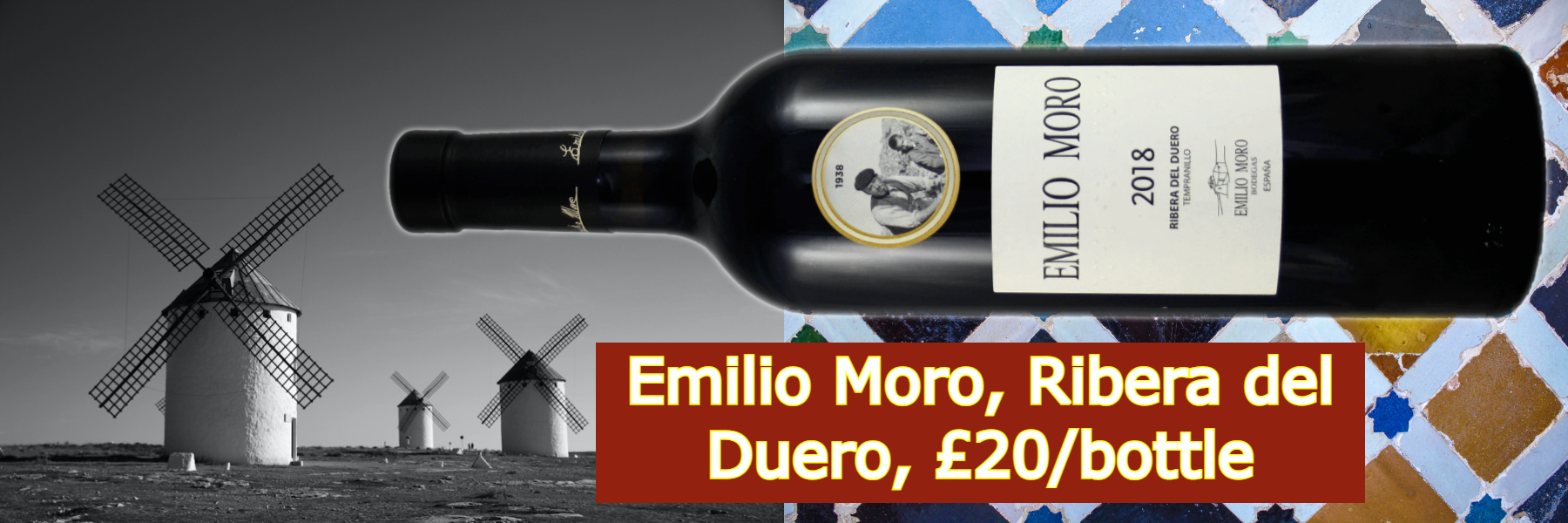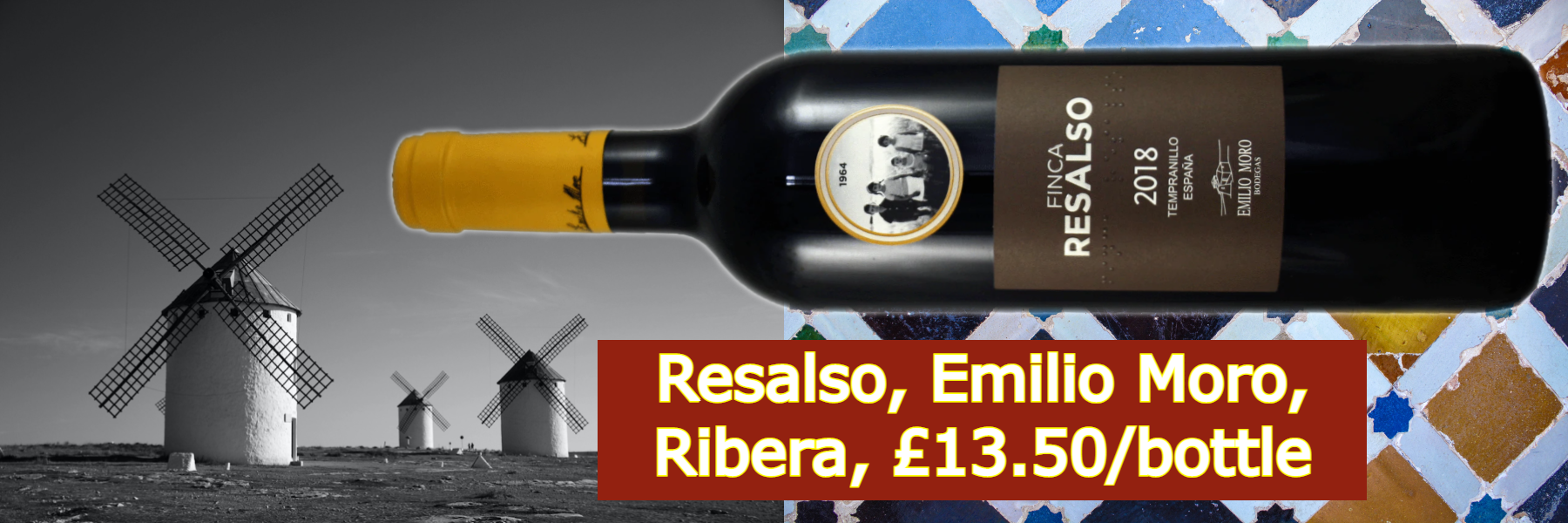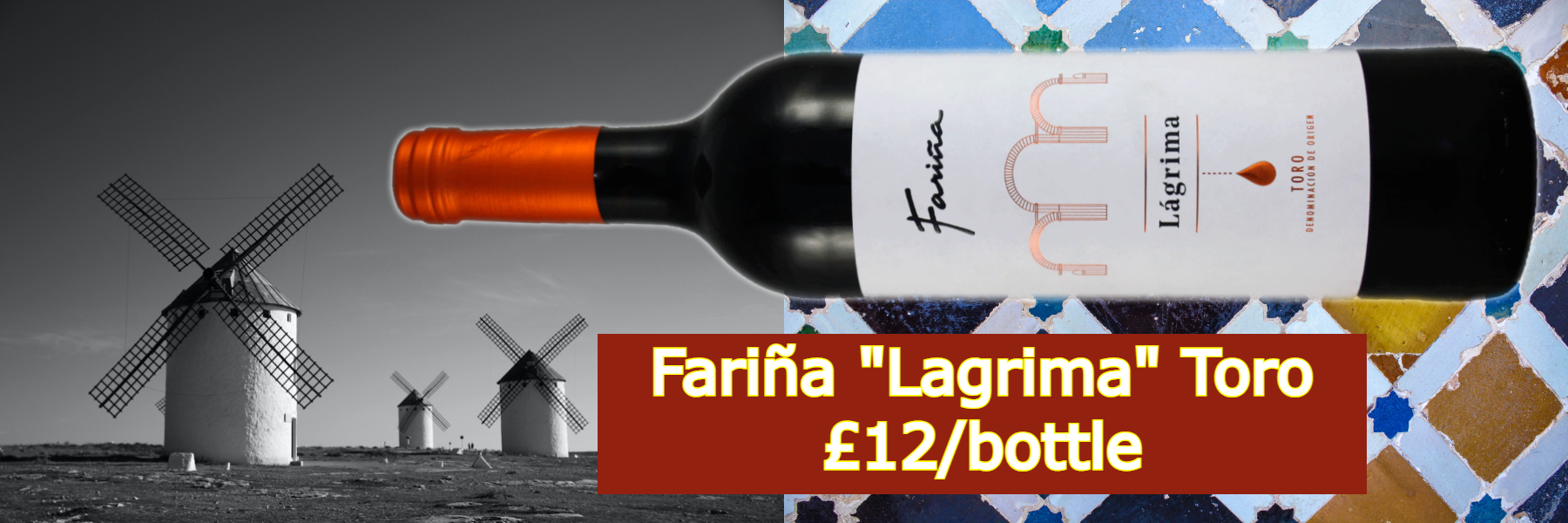Don Quixote tilting his lance at windmills. Imposing castles dominating rocky outcrops. Sporadic, forgotten, gnarled vines in ancient vineyards. The clichéd vision of the vast, dusty central plateau surrounding Madrid for mile after mile. As a wandering oenophile, it's pretty much a given that geography is a strong point. The problem often occurs when the "locals" don't bother putting up signposts, or a really famous winery is unheard of by someone who lives on the same road, but can't give directions to the guide on the trip (surely the driver should know?). It's happened in Mexico (yes, there are Mexican vineyards), on the back roads around Santa Barbara in California (looking for "Au Bon Climat") and, probably the most confusing, in Argentina, where Nieto had two wineries and the tour driver was given the "wrong winery" details. Everytime he asked a local (rarely seen), the response would be: "Yes, I know Nieto, but it's not around here. You need to take another road in the opposite direction..." and, you guessed it, after another half an hour, or so, driving in countryside devoid of any vines, the process begins once more. Stop, ask for directions, get given another set of completely wrong information and another wild goose chase ensues. A very long day! But this is Spain, many years' later in modern-day Europe with Sat-Nav tracking. Surely nothing can go wrong?
Actually, just finding a way out of Madrid's "see-through", glass-walled, terminal buildings was hard enough. The destination was visible, but so out of reach. Down another flight of stairs, along another mile of corridors, religiously following the signs to "arrivals", but always reaching a point of no entry/prohibited access. Rats in a trap, I think, giving the security team a laugh while checking their monitor screens. Oh, look, this must be the way out, I recognise that stairway when viewed from the other side. Eventually, the baggage hall was reached. Should have brought my Sat-Nav, but it's only set up for the UK, and I wasn't having to drive myself. Lesson learned!
Having visited Ribera del Duero on a couple of occasions, I assumed I'd recognise my surroundings, but no.
Travelling, by road, either from the northeast (Logrono, Rioja) via Burgos, or coming directly from the northern port of Santander, south to Valladolid, I didn't spot any landmarks until the dramatic Castillo Penafiel came into view.
[Photo attribute: Castillo de Penafiel GS3, CC BY 3.0, via Wikimedia Commons]
The Ribera del Duero wine region, within the province of Castilla y Leon, extends (west-east) for around 90 miles between Valladolid, at its western end, through Penafiel and Aranda in the centre, onwards to San Esteban de Gormaz in the east. All of these towns roughly follow the path of the river Duero. No river, no vines!
Like most of Spain, vineyards have been planted here for centuries, but the wines weren't recognised internationally, unlike the fortified styles such as Sherry, Malaga and Tarragona. How times have changed. When the UK drinkers turned their attention to oaky reds, Rioja's time had come. It's still Spain's most popular wine region, but Ribera del Duero also uses Tempranillo (a.k.a. Tinto Fino or Tinto del Pais) and lots of oak barrels, so how come no-one knew about it?
Compared to today's production, the land under vine was small, with consumption being confined to the local population. The only producer aiming for anything above "basic" was the now, world renowned Vega Sicilia, established in the late 19th century and situated at the western edge of the region
Their Unico Reserva Especial, which is a blend of three top vintages, is the region's original superstar and sells for upwards of £500 a bottle. On my first visit to Ribera del Duero I was able to buy a Crianza red called Riberal for just £3 a bottle. I found one I'd bought at the time and, 25 years' later, it was still drinking perfectly well, just not as good as the Unico!
At Vega Sicilia, they still construct their own barrels from scratch, some using French oak and some American. Everything is done by hand for quality and, when given the winery & cooperage tour, it was very apparent how much investment there was in the Bodega.
In the cellars, wines were stored in wire cages holding around 640 bottles each. So, for the Unico, that's around £300,000 worth of wine per cage. There were hundreds of cages in the room... and then they opened the door to the next cellar...it, too, was rammed from floor to ceiling with wine. No wonder the group was being followed by a guard (clutching a large baton). "No-one's going to sneak out with any wine under my watch!"
These days, Vega Sicilia have other properties including Alion (Ribera del Duero), Pintia (Toro) and Macan (Rioja).
The "D.O." of Ribera del Duero was only created in 1982, when only 9 wineries existed with 15,000 acres under vine and, today, there's closer to 300 wineries with 55,000 acres in production.
On my first visit to Spain, the route N122, running between Valladolid and San Esteban, had virtually no vineyards close to the road, but, over time and the increasing popularity of their wines, it's now "restaurant, hotel, winery, vineyard"...repeat, repeat, repeat until there's no space left. Amazing! Once you find this road, your Sat-Nav is redundant, until you need to go somewhere else. Why would you need to?
Alejandro Fernandez was the second grower to be established in the area who was aiming for making the best wine in Spain. His wine? Pesquera. Luckily, for consumers, he hasn't ramped up the prices, and they're still good value. He also owns the excellent property Condado de Haza near La Horra & Roa.
The town of Pesquera de Duero, just north of the Castillo Penafiel, is a hotbed of winemaking, with our latest listing at Frazier's by Emilio Moro being based next door to Pesquera, itself. Their wines no longer use the terms Crianza/Reserva/Gran Reserva and are headed up by the brilliant Malleolus (hopefully, coming soon!). In stock now are the "Emilio Moro" (£20/bottle) and the "Finca Resalso" (£13.50/bottle). All of these wines are 100% Tinto Fino (Tempranillo).
As for modern winemakers, the most sought after is now Dane, Peter Sisseck with his outrageously priced wine, Pingus (Around £1000/bottle). The second label, Flor de Pingus is a touch more affordable (£60-£80) and the newer, young wine, Dominio de Pingus PSI is very reasonable at only £25-£30. Even this is usually only available on allocation.
Rioja bodegas are also getting in on the act in Ribera. Roda has the La Horra "Corimbo" wines, C.V.N.E has "Bela" and Torres, from Penedes, now sell a wine called "Celeste". As expected, they're all good quality examples.
Some others to look out for are the wines from Protos (Penafiel), Aalto, Pago de los Capellanes, Pago de Carraovejas and my current favourite Dominio del Aguila. The Reserva is an elegant wine. Good for the £50+ price tag, but the Gran Reserva is three times the price and I couldn't tell the difference. I had just tried over 200 wines at the show and my palate was worn out. I'm sure it is worth it, but I'll stick to their better value wines.
Unusually, they also make an organic rosado, "Picaro del Aguila" Clarete Vinas Viejas, which has just such an amazing flavour and texture not seen in mere, pale pink, Provence-style wines. A really complex blend using Tempranillo, Blanca del Pais, Garnacha, Bobal and Tempranillo Gris.Track it down. It'll cost you around £30.
Also made is an even rarer example of an organic white wine from the Albillo grape. It'll set you back £70! Luckily, I got to try the complete range at the Robert Parker tasting event in London, two years' ago. If only they were my "everyday" wines. I can but dream.
If you're in the area, and you WILL need a Sat-Nav to find it, try the Gran Reserva (in magnum) from the "roll-off-the-tongue" named Bodega Hermanos Perez Pascuas Vina Pedrosa. It's near Capellanes, in the north of Ribera del Duero region. Good hunting!
If you still haven't had your fill of great Tempranillo, go west to Toro. Only a short distance from the border with Portugal, Toro is still almost unknown in the UK.
Yes, the luxury group LVMH (Numanthia £50 & Termanthia £200), Vega Sicilia (Pintia £60-£80) and Teso La Monja (£20-£100 range) are there, but much of Toro is like Ribera del Duero was 20 years' ago. Value is still possible!
Frazier's have just listed the "Lagrima" red from Bodegas Farina. Another 100% Tempranillo and, this wine, unlike Farina's wines of old, only has 4 months' ageing in barrel, so it's much more drinkable and fruity in style. It's just £12 a bottle.
So, after the passing of several decades, it's probably equivalent to my £3 bottle of Riberal. Well, close enough not to require a Sat-Nav (or a mobile phone app... I'm not that old).
I just noticed, when checking Google Maps, that Bodegas Farina is also on the route N122 and it's a long drive from Ribera del Duero to Toro. Anyone got a "driverless" Tesla I can borrow?





